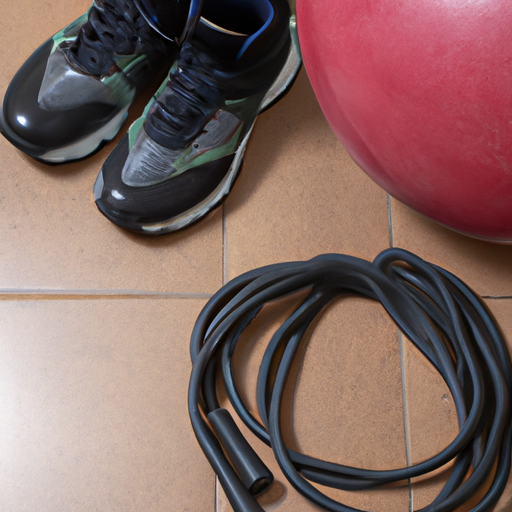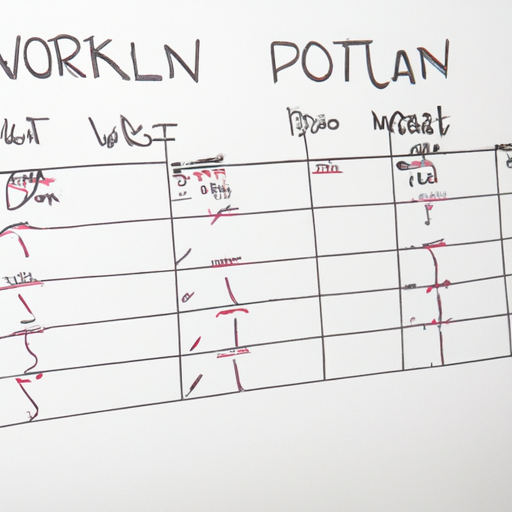
How to Improve Your Vertical Jump with Strength Training
Leap like Michael Jordan. Fly higher than an eagle. Or at least, impress your friends at the local pickup basketball game! Whatever your goal, improving your vertical jump is an exciting challenge for athletes and fitness enthusiasts alike. Here’s a deep dive into vertical jump training, with a particular focus on how leg strength and explosive power can make you the next dunking sensation.
Lay the Groundwork: Why Vertical Jump Training Matters
Whether you’re a basketball player aiming to dunk, a volleyball player spiking over a net, or just someone who wants to leap effortlessly onto countertops (although, we don't recommend this as a hobby), vertical jump training is crucial. It focuses on three key components:
- Leg Strength: The powerhouse of your jumps.
- Explosive Power: The ability to convert strength into upward motion swiftly.
- Flexibility: The hidden hero behind seamless motion and injury prevention.
Build the Base: Boosting Leg Strength
Like a tree with deep roots, your jumps rely on solid leg strength. But don’t worry, you won’t have to live in the gym like a bodybuilder (unless that’s your thing).
Top Exercises to Build Leg Strength
- Squats: Known as the king of leg exercises, squats target your quadriceps, hamstrings, and glutes. Master the technique, and don’t forget to breathe. Just remember, trees do squats all day, and they don’t even have legs.
- Lunges: These improve balance and strength, targeting multiple leg muscles. Plus, they make climbing stairs a breeze, so no more excuses for elevators.
- Deadlifts: Great for building the posterior chain, essential for powerful leaps. Imagine picking up all that optimism you dropped after your last failed jump.
Light the Fuse: Enhancing Explosive Power
Weightlifting is only part of the equation for sky-high jumps. To develop explosive power, your muscles need to be trained to react like fireworks on the Fourth of July. Here are the exercises to consider:
Plyometric Exercises to Unleash Explosive Power
- Box Jumps: The classic plyometric exercise perfect for developing explosiveness. Start small. Jumping over your couch is not an acceptable first step!
- Burpees: A full-body workout that makes your legs scream for mercy, but they build unparalleled explosiveness.
- Depth Jumps: They train your leg muscles to shorten the ground contact time. It’s like teaching your feet to be ninjas—silent and deadly.
Stretch the Tension: Importance of Flexibility
Who knew that yoga could be the hidden key to a stellar vertical jump? Increasing your flexibility allows for better motion range and reduces injury risks. So, while you’re working those leg muscles, don’t skip the stretches.
Essential Flexibility Exercises
- Calf and Hamstring Stretch: Often overlooked, but essential for full leg flexibility.
- Hip Flexors Stretch: Helps create greater hip mobility, valuable for maximizing jump height. Also, it’s a great way to show off your limbo skills.
- Cobra Stretch: Useful for keeping the back flexible, ensuring that you can take off and land safely.
Putting It All Together: Constructing Your Vertical Jump Routine
Now that you’ve got the essential exercises, it’s time to put them all into a cohesive plan. Remember, consistency is key as with any training regimen.
Sample Vertical Jump Training Plan
Here's a simplified routine that combines leg strength, explosive power, and flexibility. Repeat 2-3 times a week:
- Warm-up: 10 minutes of light cardio (jump rope, jogging, etc.).
- Strength Training (30 minutes):
- Squats: 3 sets of 10 reps.
- Lunges: 3 sets of 10 reps (each leg).
- Deadlifts: 3 sets of 8 reps.
- Plyometrics (20 minutes):
- Box Jumps: 3 sets of 5-10 reps.
- Burpees: 3 sets of 10 reps.
- Depth Jumps: 3 sets of 5-8 reps.
- Cool-down and Stretching (15 minutes):
- Calf and Hamstring Stretch: Hold for 30 seconds each side.
- Hip Flexors Stretch: Hold for 30 seconds each side.
- Cobra Stretch: Hold for 30 seconds.
Monitor and Adjust: Progress does not wait
As you grow stronger and more explosive, keep track of your progress, and make necessary adjustments. If needed, consider consulting a fitness professional for personalized advice.
Remember, achieving significant gains in vertical jump training doesn’t happen overnight. Like building a six-pack, patience, and humor (for sanity) are required!
Conclusion: Jump to New Heights (Literally)
Strengthening your legs and amplifying your explosive power doesn’t just mean you can jump higher—it means you can seize any opportunity to fly, whether on a court or in life. So, follow these exercises, stay persistent, and maybe one day, you'll be reaching for the stars. Just remember to come back down again. Happy jumping!
